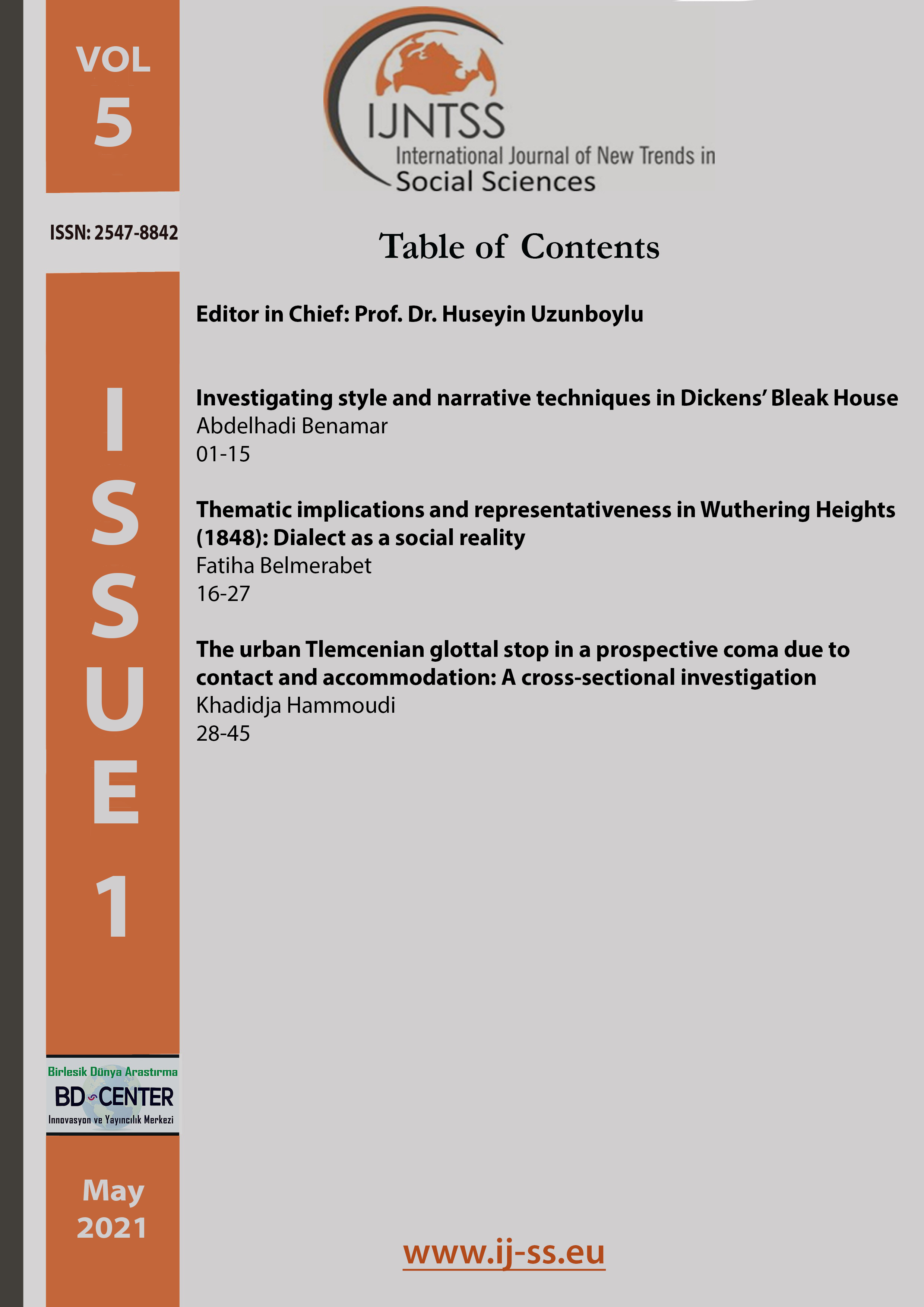Investigating style and narrative techniques in Dickens’ Bleak House
Main Article Content
Abstract
Dickens could never get rid of his everlasting catching style even though the very novel has been said to be one of his maturities. The style is there with more repetition and mock. The latter is not obvious to readers; it is dramatically welded to the circumstances, bizarre, rare but not alien to commoners of the very epoch. One of the most stunning texts and range of words, wordiness and elements within contexts alluding, saying but revealing the hidden, forbidden and the taboo, is the introduction of his novel A Tale of the Two Cities. In the following excerpts taken from Bleak House, the introduction is dense and irregularly shaped in English: the very language of his and her majesty. Wherein the question poses itself and raises the discrepancies among form and content; a dichotomy that ought to be considered in conducting the investigation of style and stylistics upon the forthcoming texts.
Keywords: Dickens, stylistics, narrative, techniques, Bleak House.
Downloads
Article Details

This work is licensed under a Creative Commons Attribution 4.0 International License.
Authors who publish with this journal agree to the following terms:
- Authors retain copyright and grant the journal right of first publication with the work simultaneously licensed under a Creative Commons Attribution License that allows others to share the work with an acknowledgement of the work's authorship and initial publication in this journal.
- Authors are able to enter into separate, additional contractual arrangements for the non-exclusive distribution of the journal's published version of the work (e.g., post it to an institutional repository or publish it in a book), with an acknowledgement of its initial publication in this journal.
- Authors are permitted and encouraged to post their work online (e.g., in institutional repositories or on their website) prior to and during the submission process, as it can lead to productive exchanges, as well as earlier and greater citation of published work (See The Effect of Open Access).
